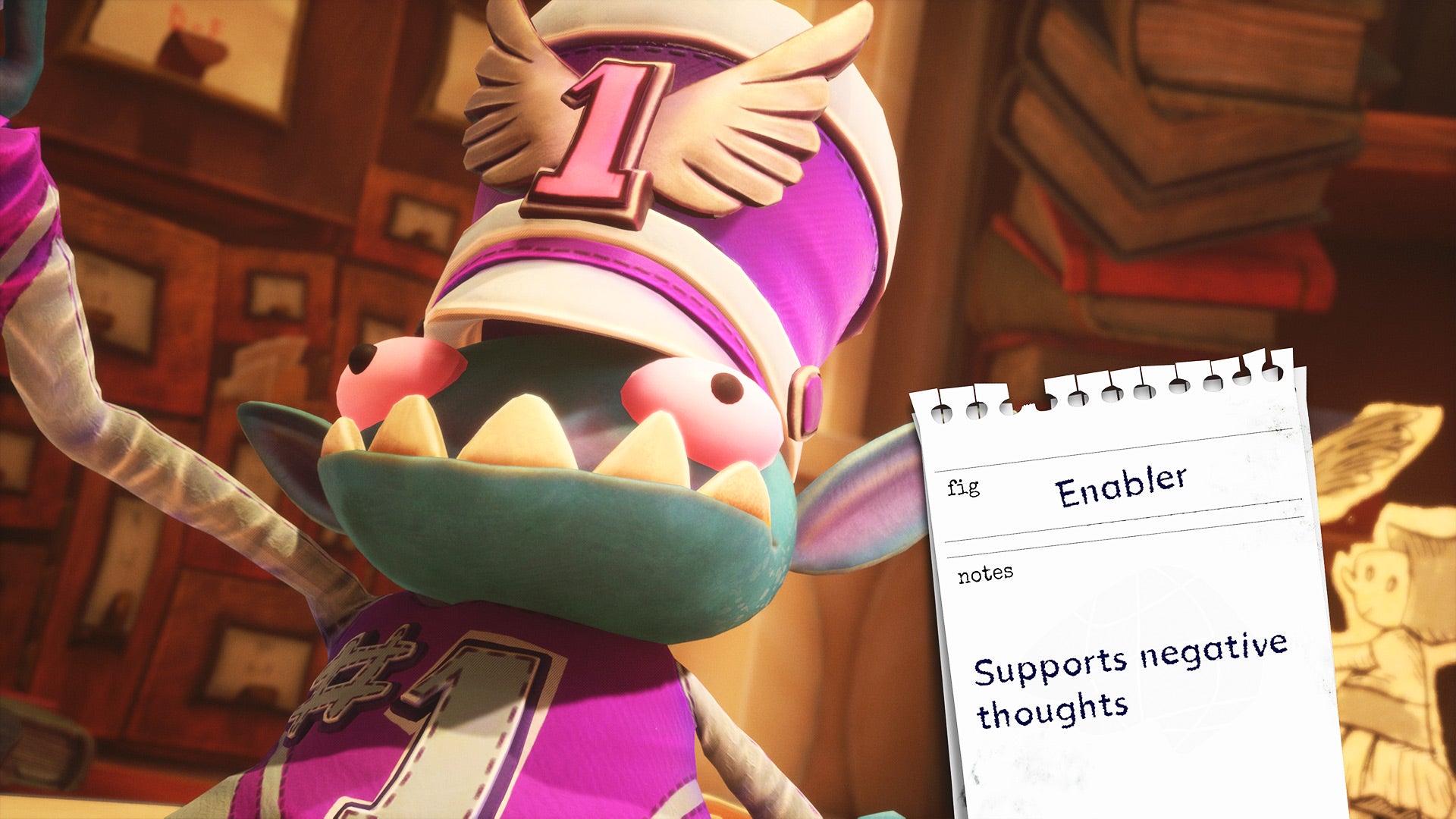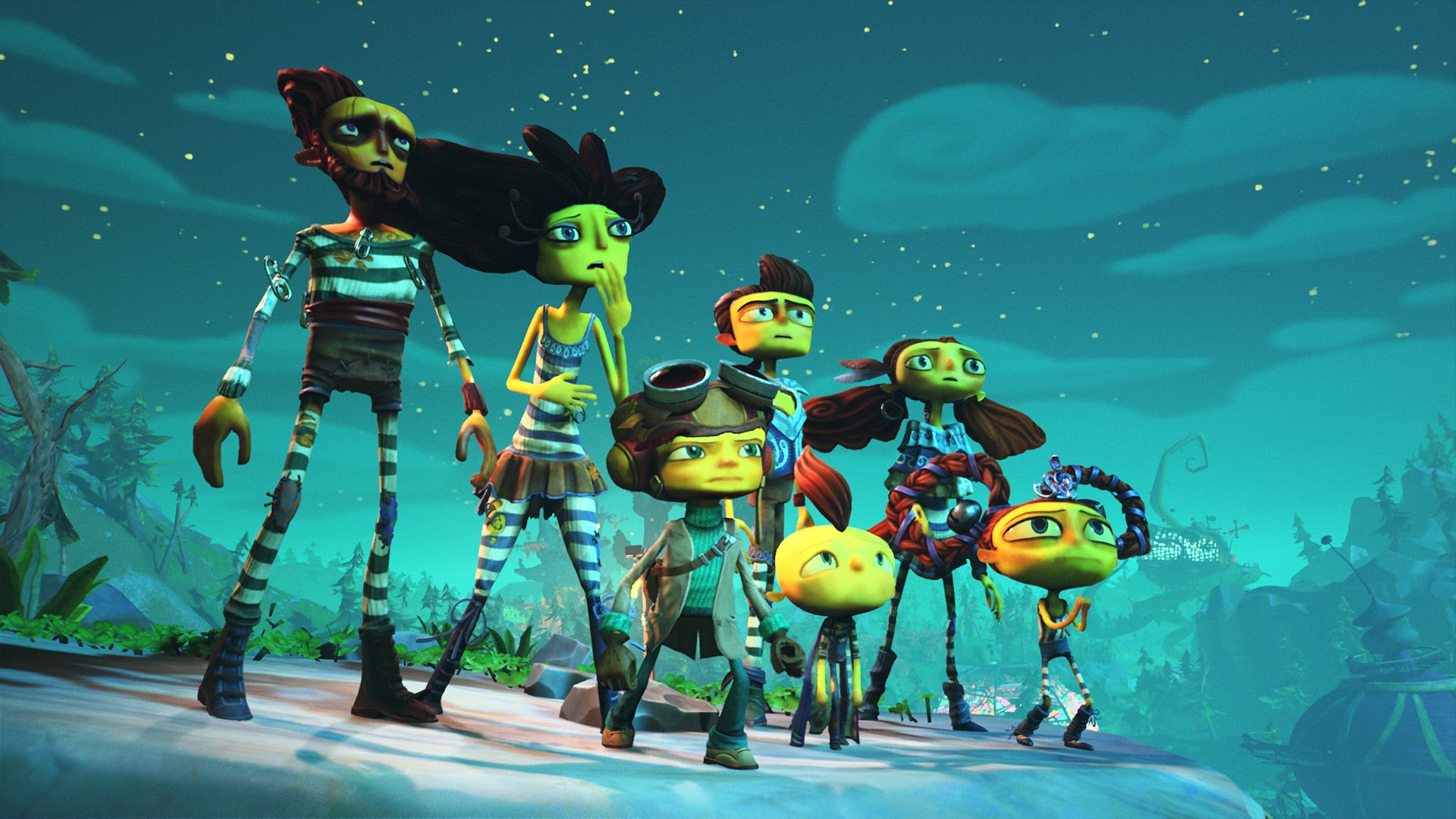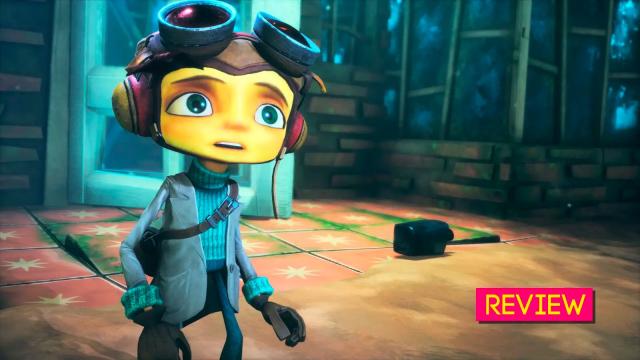People are complicated. Nobody is simply selfish or sad. No one is born bad or heroic. We are a collection of memories and experiences, some good and some… not so good. These messes of thoughts and emotions can be hard to handle sometimes, but they’re also what makes us unique. It’s what makes you, well, you. Psychonauts 2, even more than the first game, truly explores all the challenging, painful, wonderful complexity we carry around inside our heads. The end result is an action platformer with a lot to say, a ton of heart, and only a few minor design flaws.
Microsoft provided me with an early code for Psychonauts 2, which picks up shortly after the events of the original game and its VR spin-off. Fresh off of rescuing the head of the Psychonauts, protagonist Raz and his fellow agents make a jubilant return to their HQ, The Motherlobe. However, Raz’s joy is short-lived as he’s soon informed that despite his displays of bravery and brilliance, he’s not an actual agent yet; he’s simply an intern. That’s quite the demotion!
Suffering this blow to your pride, you must work to track down a mole in the organisation, eventually teaming up with some founding members of the group to defeat a nasty and powerful villain once thought to be dead. But circumstances, like people, are often more complicated than they seem, and while I won’t spoil the narrative at all, this villain, the people connected to her, and the folks who defeated her back in the day all have their inner demons, regrets, and secrets. Raz will have to help them all if he’s going to save the day. That means jumping into a lot of brains!
Like the first game, this sequel lets you and Raz dive into the minds of numerous individuals, each with their own unique mental landscape. In the original game, these were some of the best — and worst — parts of the campaign. In the sequel, Double Fine really goes wild, leveraging the more powerful consoles of today and a decade-plus of experience to craft some truly creative and amazing mental playgrounds. An early favourite is a psychedelic music festival that features a ‘60s era vibe, complete with washed-out cartoony visuals and far-out jams. Oh, and all of this takes place inside the brain of someone who has been “dead” for decades. Complicated and weird!
I don’t want to spoil too many other worlds, because their varied and memorable concepts are worth discovering for yourself. But just know that almost every world, barring one or two misfires, is incredibly gorgeous, creative, and fun. All of them are larger than what was found in the first Psychonauts, featuring more collectibles and secrets to find. This is the kind of game that makes you want to go back to past levels to get everything just for the pleasure of revisiting these places. And while the individual locations are wonderfully creative and fun to explore, the sheer variety of them is also remarkable, and makes for a memorable journey. How many games let you go to a trippy music festival, explore a huge, magical library and then let you visit a city filled with anthropomorphized germs? Not many, I’d suspect.
Luckily, exploring these worlds is made easier by the fact that most of Raz’s powers from the first game return, like pyrokinesis and psi blast, now enhanced with some new features and upgrades to obtain. You also get some brand new abilities, including a power that lets you slow down time and one that creates a copy of Raz that can be used to solve puzzles or distract enemies. All of these powers are useful too in their own ways and I often found myself changing powers out for different ones as I pushed forward on my psychic adventure.
Of course, one situation in which you often unleash those nifty abilities of yours is combat. Combat in the original game wasn’t much fun, thanks to some finicky control choices and a lack of enemy variety. Both of these issues are resolved in Psychonauts 2, showing off how this sequel builds and improves on the 2005 original.
You can now freely map any four powers to the triggers and shoulder buttons, which is very useful for areas that rely on specific abilities. For example, you might need both the ability to slow time and the power to zip around thought bubbles to get through a gauntlet of spinning blades over pits of death. But after that, you may want psi-blast back, to take out some tiny enemies spawning in waves. So you just quickly swap out your powers; nothing is locked away behind too many menus. Being able to quickly map powers to whatever buttons you prefer keeps you immersed in the action and does away with some of the first game’s unnecessary frustration.

And you won’t just be using those powers on the same old foes. Throughout your adventure, you encounter new enemies and variations on old enemies. Yes, the classic Censors are back, though now you also face fast-moving Panic Attacks and explosive-tossing Bad Ideas. There’s even an enemy type, Enablers, that buff and protect other monsters. All of these new baddies help make combat play more like mini-puzzles that you must nimbly and strategically tackle rather than just waves of things you run at and then punch, which was most of the combat in the original. It’s a welcome change and with the added difficulty options and accessibility features, if the more demanding combat is too much for you, it’s still possible to knock down some settings and have an enjoyable time.
I do wish the new pin system was more useful, though. Pins, which can be bought and equipped using an in-game currency, let you change up various parts of Psychonauts 2. Want Raz to do more damage to Censors? There’s a badge for that. Want to get health back every time you hit a mental connection? There’s a badge for that, too. The problem is many of these badges are expensive and not all of them are super useful. Plus, you can only equip three at a time and can only buy new ones at various vending machines that can only be found in certain areas of the world. So getting new ones or creating really wild combos of pins is hard and often not worth it. t. It’s a neat system in theory but in practice, it just felt like a waste of time.
[review heading=”Psychonauts 2″ image=”https://www.gizmodo.com.au/wp-content/uploads/sites/3/2021/08/23/04189f72d2caa2a425f6870329947a77.jpg” label1=”BACK OF THE BOX QUOTE” description1=”We’re playin’ those mind games, together…” label2=”TYPE OF GAME” description2=”Action-platformer with puzzles, comedy, and collectibles” label3=”LIKED” description3=”Creative and fun mental worlds, great writing, strong cast, good platforming, looks nice” label4=”DISLIKED” description4=”Pins feel useless, some minor bugs, a few meh levels” label5=”DEVELOPER” description5=”Double Fine” label6=”RELEASE DATE” description6=”August 23″ label7=”PLATFORMS” description7=”PS5, PS4, PC, Xbox One, Xbox Series X/S (Played) ” label8=”PLAYED” description8=”21 hours, completed main campaign and some side quests.” ]
Platforming, on the other hand, feels excellent in Psychonauts 2, thanks to some tight controls and fluid animations. I played on Xbox Series X where I was able to experience the 120fps mode and it was a joy. However, even at 60fps, the jumping, climbing, sliding, and running felt responsive and smooth. I would sometimes find myself hopping around an area, too tired to play anymore, but having too much fun to stop running and jumping off of stuff. As before, you can call up a ball of energy that you can ride on to move around faster or use as a balloon to help you make extra long jumps or cross dangerous surfaces, like water. Yes, water is still bad. Raz and his family are still cursed so avoid water at all costs.
Speaking of Raz and his family, they’re part of one of the best casts of characters I’ve seen in a game in a long time. Replacing the ensemble of summer camp kids from the first game are a group of interns. Compared to the kids, these interns are older, slightly meaner, yet also richer, more complex and fleshed out. The adult cast is equally great, with the standouts being the founding members of the Psychonauts, each with their own quirks and personalities that I quickly fell in love with. I especially love Jack Black’s character which I don’t want to spoil. Just know that it’s perfect for him.
You can spend hours just talking to Psychonauts 2’s wonderful characters, who have new things to say as you progress through the game. It’s all easy to avoid if you’re just here for the jumping and the punching. But if you care about Lillie, Ford Cruller, Raz’s parents and siblings, and the rest of the gang (and you should), you’ll want to hear about their lives and their beliefs. Psychonauts 2 is a game about people, after all, and these characters are all so well-written and performed that missing out on them would be missing out on part of what makes this such a special game. It’s often very funny, of course, but there are also dramatic moments with real weight. I even teared up once or twice towards the end.

What really brings all of this together — the combat, mental worlds, platforming and more — is the narrative, as Psychonauts 2 explores themes revolving around who we really are, what we hide from others, and how the past always catches up with us in the end. Things get dark. People die. Lives are ruined by dumb, fearful mistakes and decisions. And like the first game, Psychonauts 2 spends a lot of time letting you dig into what makes the villains tick. Often, what you find in their minds is pain.
Raz can usually help them help themselves as they battle their inner demons and hangups. Yet as Psychonauts 2 points out early on, jumping into someone’s mind is all about trust and care. If Raz tries to change someone by force, against their will, it doesn’t go well. It’s a violation of the trust people must have in you when they let you enter their mind.
That’s the thing: The Psychonauts aren’t about fixing or changing people through brute force or trickery, but rather helping people with their problems in a way that ultimately lets them have the power. People are complicated balls of emotions and memories. We all have some darkness in us, and Psychonauts 2 suggests that under the wrong circumstances, anyone could become the big baddie that has to be taken down. That cuts both ways, though; it also means that anyone can be a hero. Anyone can save the day or help someone feel better.
Psychonauts 2 isn’t about gunning down the big boss at the end and cheering over their dead body. It’s about understanding that even the biggest arsehole is still a person, and deep down they may just need some help. We all need some help sometimes. The key is asking for it. Today, in 2021, it’s easy to look around and see people who seem cruel and evil, and to assume they are lost souls, not worth saving. Psychonauts 2 says otherwise. It says that everyone can change. I’m not sure I fully believe that, but I’ll be damned if that’s not one hell of a hopeful message.

Leave a Reply